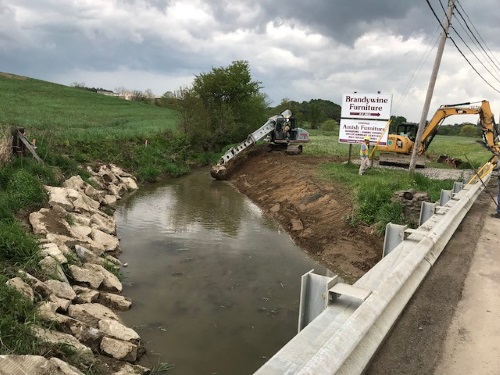FEDERAL ACTION
Registration Open for AASHTO’s Washington Briefing – AASHTO Journal
House T&I Subcommittee Holds Hearing on CAVs – AASHTO Journal
Biden, automakers face cultural divide on U.S. push for EVs – Automotive News
White House and EPA pen scathing letters to USPS over next-gen vehicle plan, including EV misinformation – Electrek
President Biden, USDOT Releases Toolkit to Help Rural Communities Build Out Electric Vehicle Charging Infrastructure – USDOT (Media release)
COVID-19
Airlines, travel groups urge White House to remove testing requirement for vaccinated travelers – The Hill
Traffic roars back: The pandemic driving lull is over, but mutated commuter habits have changed the transportation equation – Deseret News
INFRASTRUCTURE RESILIENCE AND SUSTAINABILITY
AASHTO Comments on FEMA Floodplain Plans – AASHTO Journal
Michigan finalizing plan to build first-ever wireless charging road for electric cars – WJBK-TV
How Computer Vision Can Create Smart Transportation Systems – Forbes
AIR QUALITY
Transportation overtakes energy as leading greenhouse-gas producer in North Carolina – News & Observer
Is Key California Pollution Law Working? – Governing
ENVIRONMENTAL JUSTICE
Transit Buses Across US Are Reserving A Front Seat In Honor Of Rosa Parks – Because of Them We Can
How Michigan agencies are addressing inequalities in infrastructure projects – WDET Radio
Austin to spend $65 million this year to reduce displacement near future transit lines – Austin Monitor
White House Council on Native American Affairs’ Engagement Session with Tribal Leaders Focuses on Infrastructure, Public Safety – Native News Online
Evaluating Transportation Equity: ITE Quickbite – Planetizen
From walking to cycling, how we get around a city is a gender equality issue – new research – The Conversation
NATURAL RESOURCES
Nevada DOT Adds Fences to Reduce Animal Collisions – AASHTO Journal
Los Angeles Is Building a Future Where Water Won’t Run Out – Bloomberg
CULTURAL RESOURCES
Preserving Post-WW2 Historical Homes – AASHTO’s ETAP Podcast
What Was Lost in Pittsburgh’s Broken Bridge – CityLab
Nevada DOT Launches Cultural Resources Latino Project and Seeks Input to Inform Future Projects – Nevada DOT (Media release)
HEALTH AND HUMAN ENVIRONMENT/ACTIVE TRANSPORTATION
WA lawmakers advance bill to create office to address homeless encampments near highways – Seattle Times
Batavia Launches Bicycle and Pedestrian Planning Effort – Kane County Connects
Bike advocates ask for aid to finish Lincoln-to-Omaha trail – AP
How to Jump-Start Cycling Infrastructure Improvements – Route Fifty
Austin Urban Trails Program to Break Ground on Violet Crown Trail North – City of Austin (Media release)
TRB RESOURCES/ANNOUNCEMENTS
Coverage of 2022, TRB Annual Meeting: Creating Pathways to Equity – AASHTO Transportation TV News (Link to video)
Making Travel More Equitable for People with Disabilities – TRB
FEDERAL REGISTER NOTICES
Transportation Research and Development Strategic Plan; Request for Information; Extension of Comment Period – USDOT (Request for Information; extension of comment period)
Operational Risk Assessments for Waterfront Facilities Handling Liquefied Natural Gas as Fuel, and Updates to Industry Standards – Coast Guard (Final rule)
Notification of Public Meeting (Local Government Advisory Committee and the Small Communities Advisory Subcommittee) – EPA (Notice)
Delegation of Authority to the State of West Virginia To Implement and Enforce Additional or Revised National Emission Standards for Hazardous Air Pollutants Standards and New Source Performance Standards – EPA (Notice)
Collaborative Forest Landscape Restoration Advisory Panel – Forest Service (Call for nominations)
Investigation Into Conditions Created by Canadian Ballast Water Regulations in the U.S./Canada Great Lakes Trade – Federal Maritime Commission (Request for comments)
Takes of Marine Mammals Incidental to Specified Activities; Taking Marine Mammals Incidental to Ferry Berth Improvements in Tongass Narrows in Ketchikan, Alaska – NOAA (Notice; proposed incidental harassment authorization; request for comments on proposed authorization and possible renewal)
Pipeline Safety: Pipeline Safety Enhancement Programs – Pipeline and Hazardous Materials Safety Administration (Notice)


